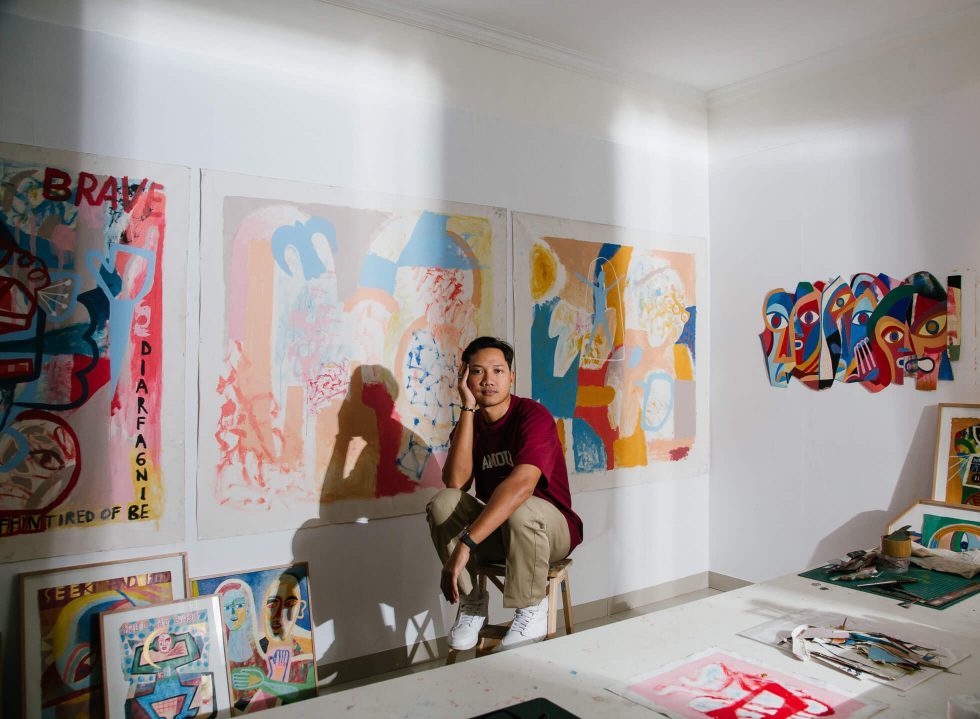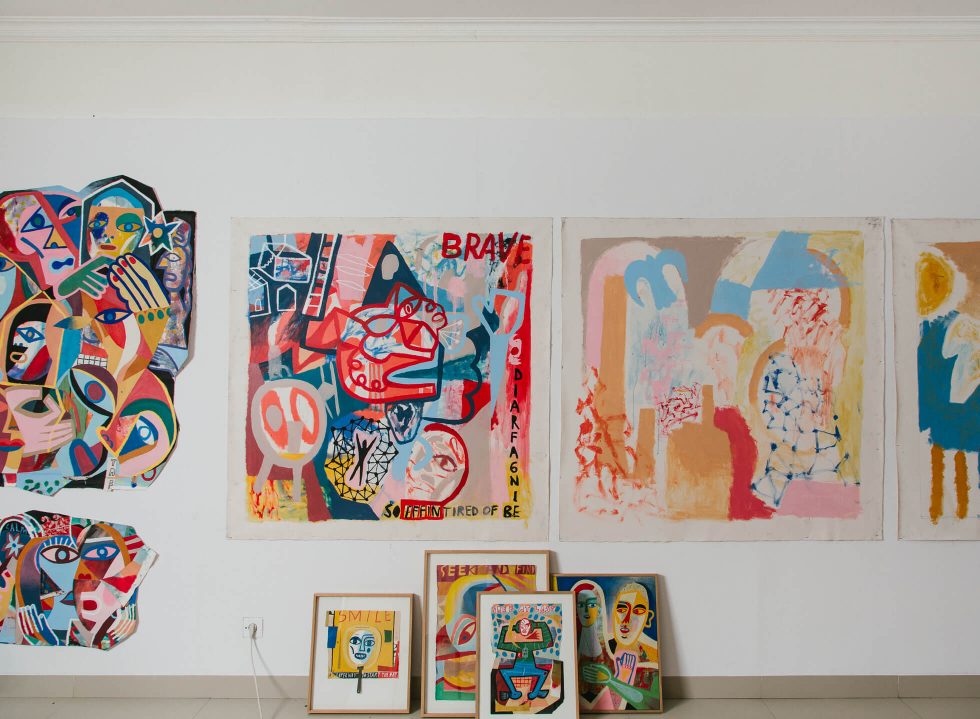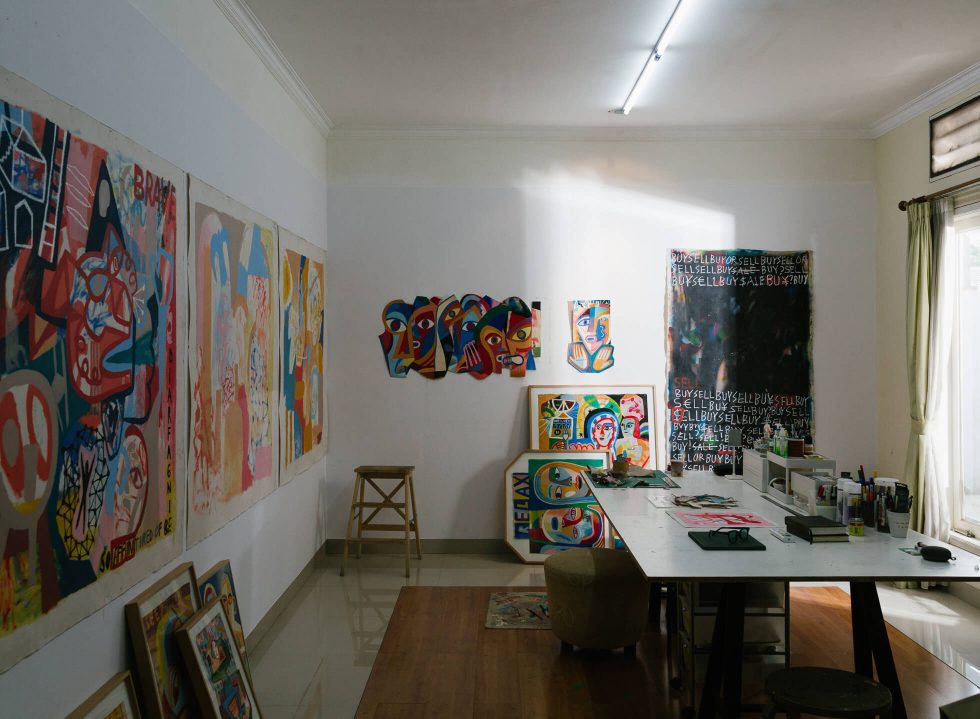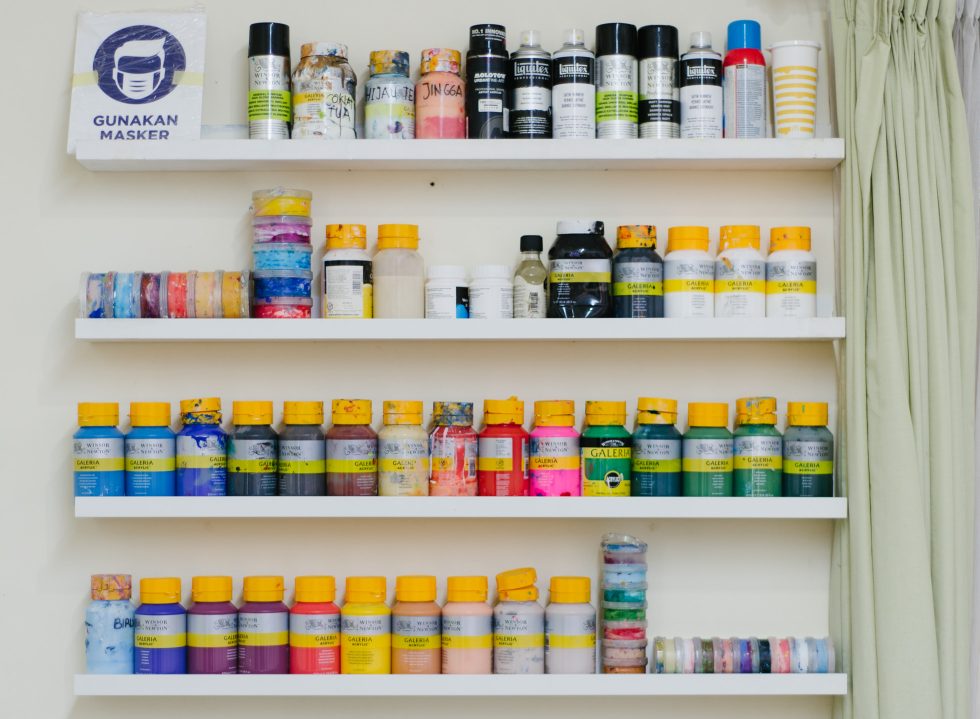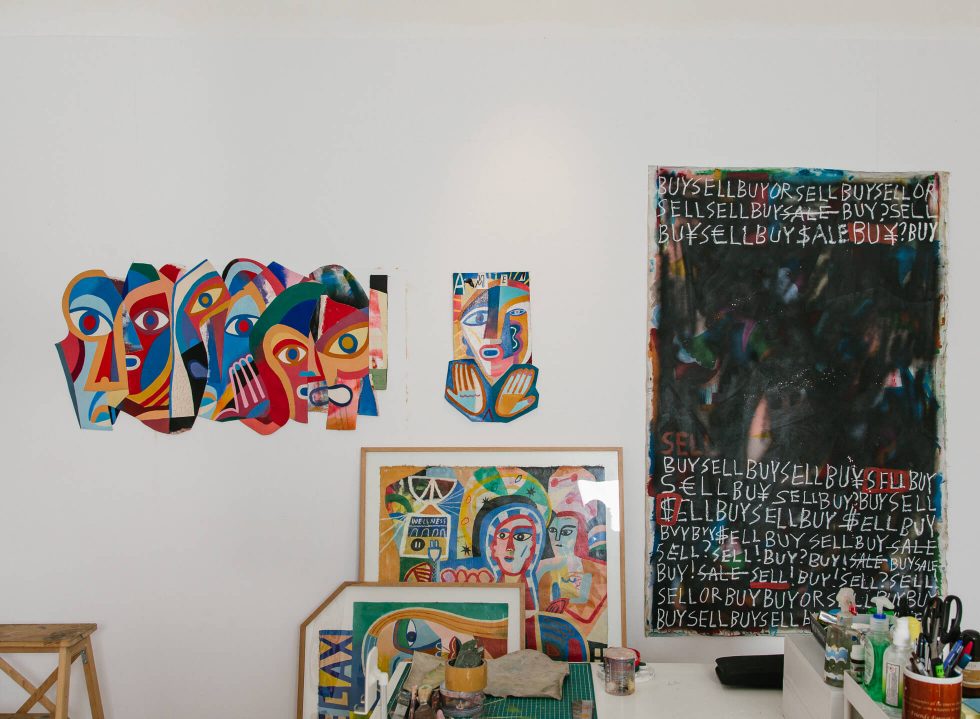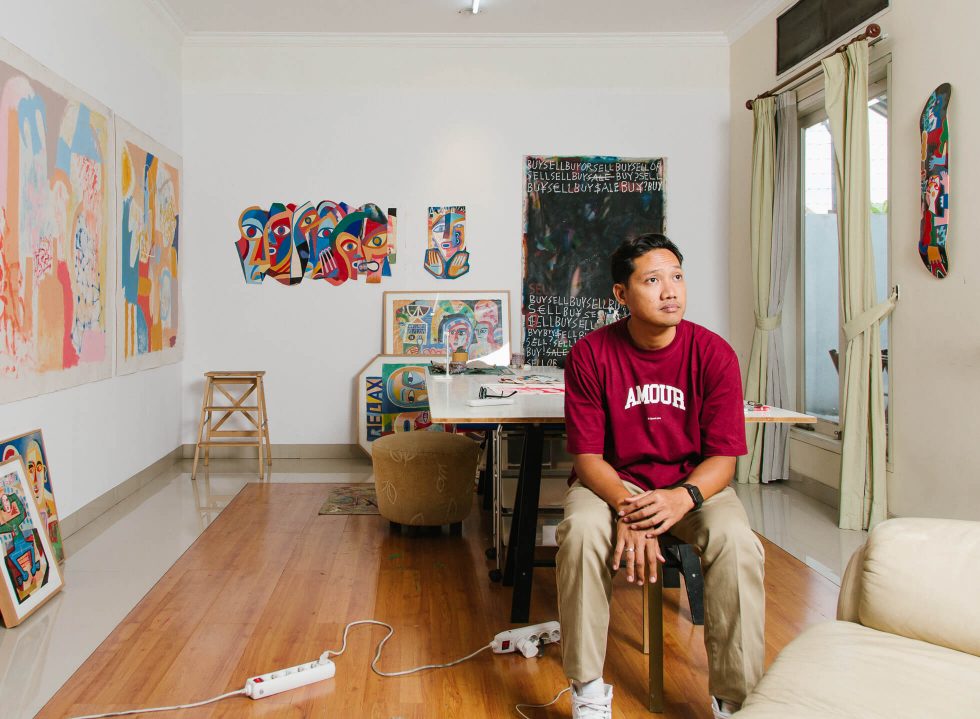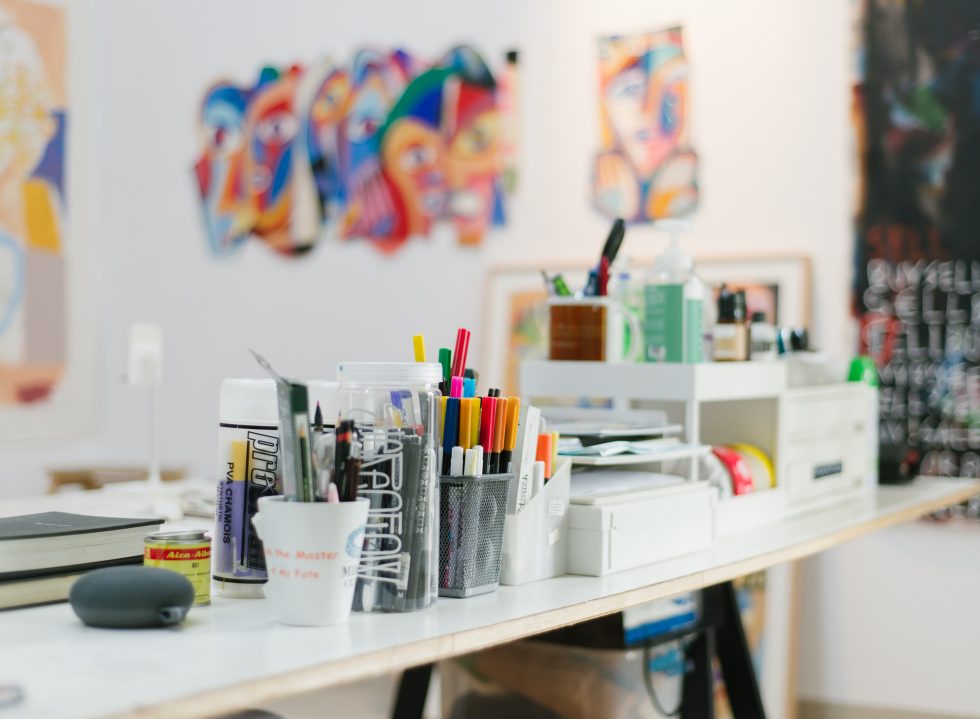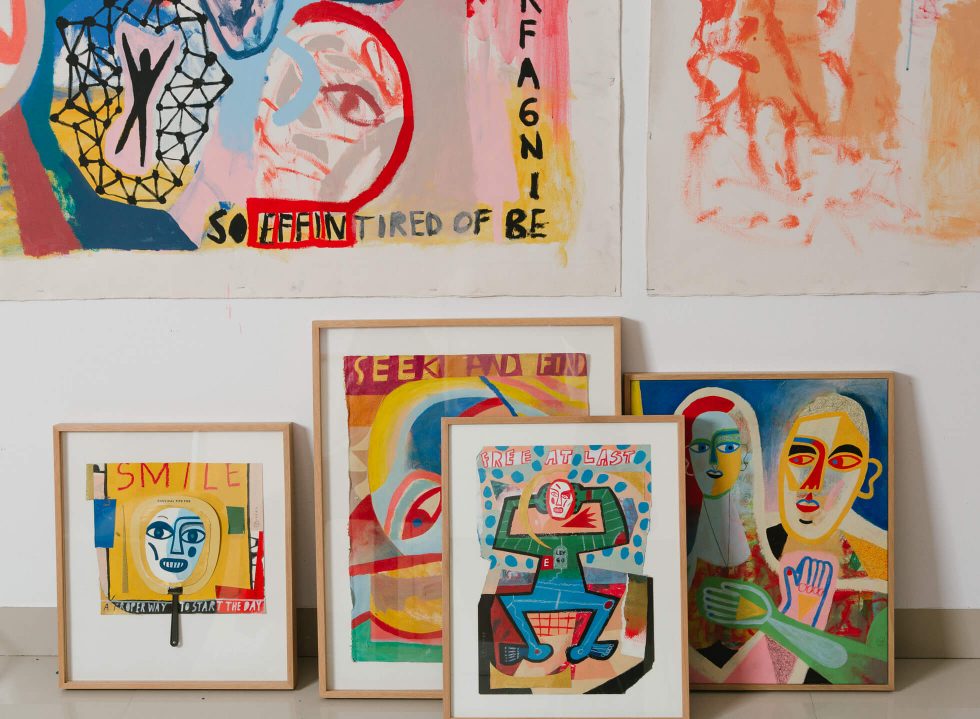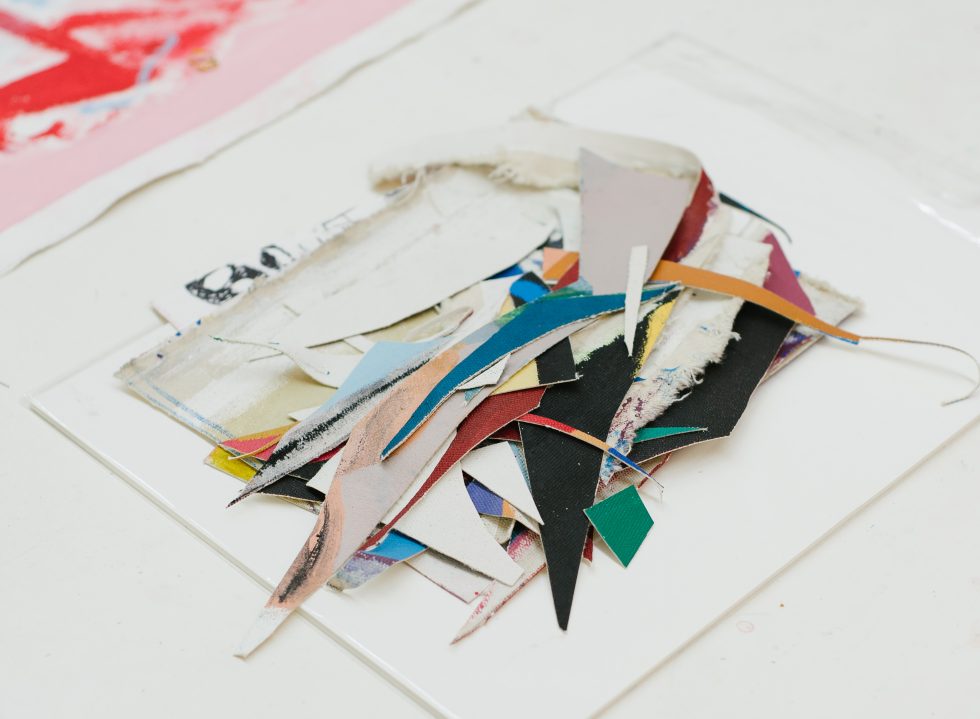Adorned in lush, fluid brushstrokes and a dynamic play of geometric shapes and colours, on the surface, the works of Rizqi Rizaldi Ranadireksa, otherwise known as his moniker Abenk Alter, gives off the impression of a happy-go-lucky, untroubled persona. Yet, his artistic process reveals that the illustrations are loaded with much more: the vulnerabilities of recognising and interpreting thoughts and emotions, and with that, the pursuit of freedom when it’s done right.
Though slow-going, his venture into the art scene took on quite a linear route. “I’d always had an interest in drawing. My mother has always encouraged me to be free with my words and drawings on paper. This quickly turned into a daily habit, and a principle I still hold today,” the artist blurts out. Even so, it wasn’t as direct as it seems. With a background in graphic design and a musical stint under R&B musical group Soulvibe, it wasn’t until 2017 that the then-singer shifted gears and took to painting full time.
“[Painting] is the best way I can connect to and organise my thoughts, it’s almost like a confession of sorts.”
“It was only until I began painting consistently that I felt a sense of ‘rightness’. Something like yeah, this is it for me,” he shared with a knowing smile. Irrespective of the means, be it songwriting, painting, or sketching, to the artist, these channels pull at him for the same reason. He sees them as “modes of expression”, and he recognises his need for it.
It seems only telling then that he likens painting to journaling. “Whether anger, sadness, frustration, or joy, it’s really important that we pick these emotions and thoughts apart, no matter how minute they may be, and give them form, in a way validating them,” he shares in an easy yet animated manner, as if chatting on a subject he could discuss in endless. “[Painting] is the best way I can connect to and organise my thoughts, it’s almost like a confession of sorts,” he continued on.
To that, he adds that he recently started to pick up writing again. Not exactly in the form of journaling, but as part of a three-page ‘morning pages’ discipline which he encountered in author-slash-artist and filmmaker Julia Cameron’s book, ‘The Artist’s Way: A Spiritual Path to Higher Creativity’, a book he recommends more to read. The author swears by this ritual, which in summary, encourages readers to take part in a free-flowing stream of three-page writings every morning—a practice Abenk believes aids to his self-understanding, and ultimately, his craft.
As a result, his work revolves around a constellation of emotions recomposed into narratives on his canvas, with self-retrospective themes such as connection, gratitude, and acceptance appearing often. In his most recent solo exhibition ‘Ritual Merilis’, which was shown in Jogja-based gallery Kohesi Initiatives back in August last year, tender moments are depicted on frame; a loving embrace, reconciliation, and a collage of scenes evoking gratitude and affirmation.
These sit in contrast with his black and white oil-on-canvas paintings from ‘Interplay’, another solo show he did a few years back in Ruci Art Space, where he explored the meaning of duality by yielding minimality through the absence of his usual streak of colours. Through these works, Abenk displays his versatility in communicating complex subject matters through a jumble of mediums.
“Why do I paint? It’s through my practice that I get to rediscover and find the answer all over again.”
Unabiding to one specific genre, his body of work floats through the influences of Neo-Cubism and Pop Art. Combined with a master’s degree in Mysticism, there’s a layer of spirituality that underlines his paintings, which manifests itself onto his choice of colours, figurative symbols, and thorough self-reflection.
From large-scale paintings, murals, to A5-sized pen-on-paper doodles on a sketchbook he carries around, Abenk’s style is quick to be recognised: lines are free-flowing and undefined, rendered in primary hues of red, blue, green and yellow, if not the occasional black and white. Though that may be how people remember his work, the artist isn’t closed off to change, rather, he is very accepting of spur-of-the-moment adaptations. When starting a piece, he prefers to “paint freely, and let go of the expectation to be precise.”
“I try to approach a new piece without expectations. Sure, sometimes I’ll outline or sketch before working on large pieces, but when the final painting takes a life of its own and isn’t imitative of the original sketch, that’s what excites me. It feels much more organic, more honest,” the 36-year old comfortably shares.
Similarly, he employs the same unguarded sensibility in his method of working. He claims he is most productive when he sticks to a loose schedule, a sort of “no-system-system,” as he calls it. It’s not that he doesn’t see the benefit of planning, but rather, he is aware of how, for him, following a restricted to-do list can achieve the opposite. This approach allows him to leave room for spontaneity and unpredictability—a mentality he relies on in order not to “fall into the trap of complacency or mindless-creating.”
With this in mind, he shares his admiration for English contemporary artist Damien Hirst. Explicitly his tenacity in reinventing himself as an artist; with works ranging from sculpture, painting, to extreme installations—most notably in the form of preserved dead animals. “It’s refreshing to see an artist continually evolve without feeling dictated by what people think they should do or what their style should be, I strive to have this level of evolution and honesty,” he gushed.
Starting off the new year with a few commissioned pieces and an upcoming exhibition, he grounds back to the reason why he does what he does. “Why do I paint? It’s through my practice that I get to rediscover and find the answer all over again.”
